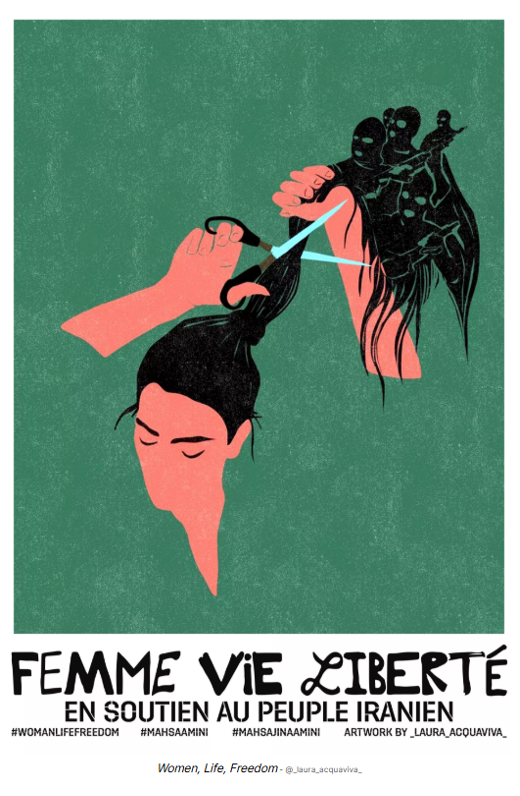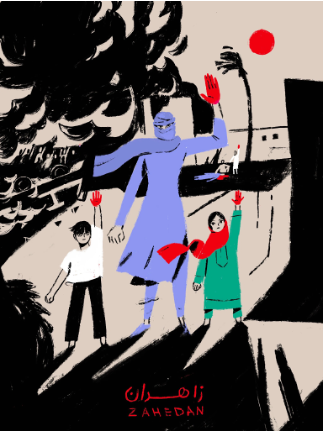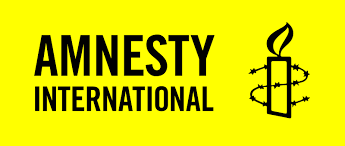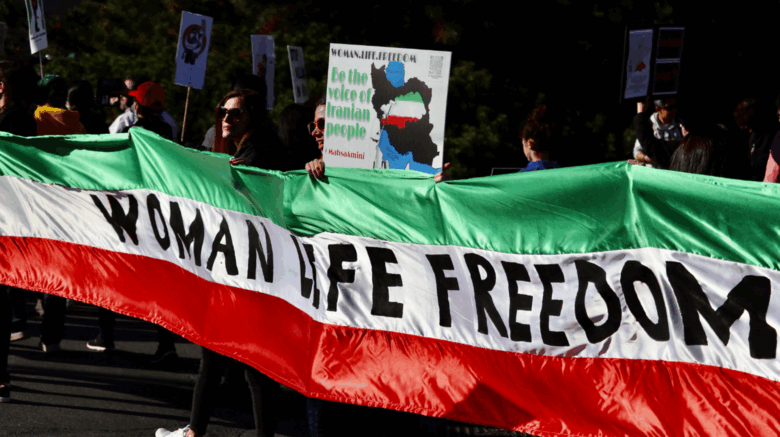AUTHOR: Inês Alves Tomé
For over 40 years, Iran has been suffering from gender apartheid. During this time, the Iranian government has been implementing a regime in which some parts of the population, in particular women, are discriminated against and extremely excluded from participating in normal society. Unfortunately, this discrimination which Iranian women face on a daily basis is still widely common and it isn’t exclusive to Iran. Despite the amount of cases of gender discrimination around the globe, there is still no protection for women under international law.
Despite the struggles, Iranian women keep fighting for their basic rights and equality which has been never-ending. This, however, doesn’t come with consequences since Iranian activists are faced with heavy penalties from protesting. So, one must wonder: When did this all start and is there any hope towards a “happy ending”? In this article, I will be describing the major events that have happened in Iran in the last 3 years: all the way from the events that took place in “Women, Life, Freedom” Manifestation all the way to the UN Human Rights’ Resolution.
The Moment When Everything Changed
In September 2022, Zhina Amini, a 22 year old Iranian girl, was captured by the Iranian authorities in order to her non compliance to the mandatory veiling laws. This story did not have a good ending for Zhina since she died while in prison. In addition, the brutality and the horror her death caused to the world also created a sentiment of revolt. Zhina Amini’s bravery became an inspiration for women, not only in Iran, but around the world. The degrading treatment women were facing in the country was finally recognised and resulted in the movement “Women, Life, Freedom”. This movement had as an objective to stand up to the Iranian government and demand a more equal society for Iranian women.
However, Iranian authorities did not receive this movement with “open arms”. Instead, they responded with extreme violenceincluding torture, sexual violence and more types of inhumane treatment. Several of them shared how they were permanently scarred by the way they were violently treated by officials with associations like Amnesty International. Agnés Callamard, Amnesty International’s Secretary-General, described the situation as: “Intelligence and security agents in Iran used rape and other sexual violence to torture, punish and inflict lasting physical and psychological damage on protesters, including children as young as 12 (…)”. However, even if the incident was extremely brutal, there hasn’t been a single report to bring these officials to justice.
Faced with these allegations, the Iranian officials’ denied the claims. On top of this, not only were they pretending that the abuse of power through violence hadn’t happened, they were found distorting and tampering with evidence and, at the same time, threatening the victims’ families into staying in silence. Evidently, even before Zhina Amini’s death, this behaviour from the Iranian’s authorities was extremely normalised and not uncommon. However, the importance of the movement helped get worldwide attention from people and media for these horrible crimes against human rights in Iran.
A Drastic Turn of Events
After this event, in late May 2023, and in direct response to the movement “Women, Life, Freedom”, the Iranian government decided to create a new veiling bill. With this, it was declared that women and girls without headscarves in public would face stricter penalties than ever before. This rule also applied in their own personal vehicles, which would be confiscated as a consequence. Additionally, a lack of head scarf could impact their monetary remuneration and even lead to the women being fired.
This new bill was a huge step back for women’s rights in Iran. As previously mentioned, if a woman decided not to use a headscarf in the streets, in their car, or anywhere else in public, they could not only be penalised with severe social and economical punishments, in more severe cases, they could also be sentenced to death. Furthermore, this new bill also dictated that common civilians needed to be on the alert and warn the authorities in case they see a woman without a headscarf.
In fact, women and the rest of civilians are not the only ones whose responsibilities change after this new bill. Iranian authorities are as well expected to organise a large-scale campaign in order to check if all women and girls are complying with these new veiling laws. In order to do this, they have increased their vigilance in public spaces and increased their police checks in women cars. As Diana Eltahawy, the Amnesty International’s Deputy Director for the Middle East and North Africa concluded: “Iran’s authorities are terrorizing women and girls by subjecting them to constant surveillance and policing, disrupting their daily lives and causing them immense mental distress. Their draconian tactics span from stopping women drivers on the road…to imposing inhumane flogging and prison sentences”.
What Now for Iranian Women?
As of today, women in Iran are still suffering at the hands of this bill. Recently, Iranian authorities were known to have arrested at least 5 different women for engaging in protests for their rights on women’s day. However, thanks to the international attention the UN Human Rights Control has demanded a mandate in order to investigate the crimes committed in the 2022 Woman Life Freedom protests starting from the beginning of April 2025. This was a direct way to demonstrate their fight and support towards justice and human rights. So, even if women in Iran are still suffering under the 2023 veiling bill, their strength, voice and determination are not only shaping Iran’s future, they are also setting an example for the entire world.


Sources (article):
https://www.amnesty.org/en/documents/mde13/7041/2023/en/
Sources (images):
https://www.3cr.org.au/radioactive/episode/women-life-freedom-uprising-iran

